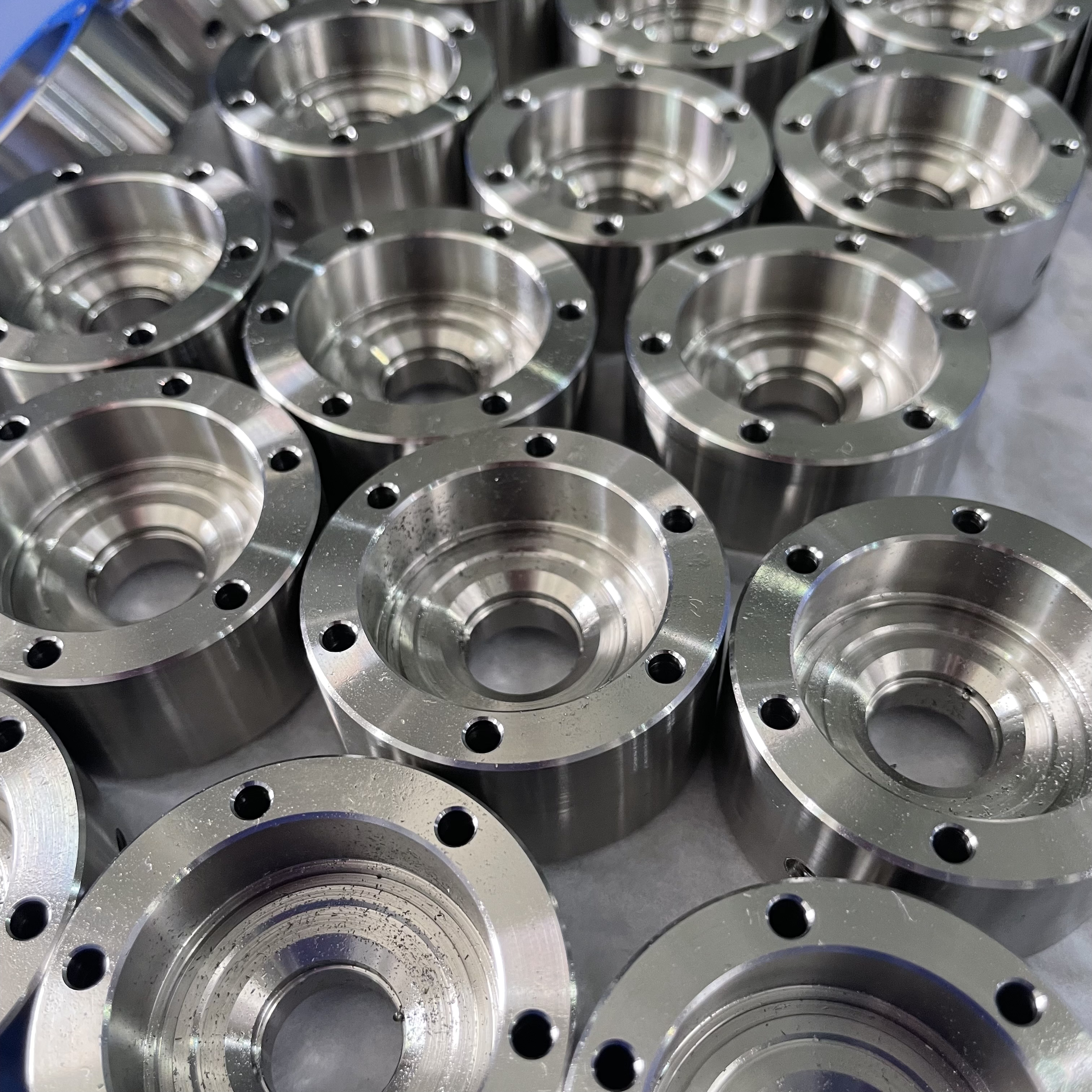How Additive Manufacturing and CNC Machining Can Complement Each Other

You can achieve remarkable results by combining additive manufacturing with CNC machining. These technologies complement each other, addressing limitations while enhancing efficiency. For instance, hybrid manufacturing is gaining traction in industries like aerospace and automotive, enabling the creation of complex geometries and multi-material builds. This synergy drives innovation and improves product quality across sectors.
Key Takeaways
Using 3D printing and CNC machining together improves design options. This mix helps make detailed shapes and strong parts.
3D printing is great for quick models, and CNC adds detail. This process saves time and makes parts more exact.
Mixing these methods cuts down on waste and costs. Using both tools helps companies stay eco-friendly and keep good quality.
Unique Strengths of Additive Manufacturing and CNC Machining

Additive Manufacturing: Design Flexibility and Complex Geometries
Additive manufacturing offers unparalleled design flexibility, enabling you to create intricate geometries that traditional methods cannot achieve. Its layer-by-layer approach, especially in techniques like selective laser melting (SLM), provides freedom to innovate and optimize product designs. You can easily modify designs and produce complex shapes, which is particularly beneficial for industries requiring lightweight yet stable components.
Key Advantages:
Allows for intricate details and complex geometries.
Simplifies the production of lightweight, high-strength components.
Facilitates rapid design changes without significant cost increases.
For example, in the aerospace industry, additive manufacturing produces high-strength, lightweight parts that reduce fuel consumption and CO2 emissions. Similarly, automotive manufacturers use 3D printing to create rare parts for classic cars, improving safety and enabling rapid prototyping. The energy sector benefits from corrosion-resistant components designed for extreme environments.
Industry | Example of Application | Benefits |
|---|---|---|
Aerospace | Complex, high-strength parts for aircraft | Reduced weight, lower fuel consumption, and lower CO2 emissions. |
Automotive | 3D printed parts for rare classic cars | Parts consolidation, improved safety, and rapid prototyping for quality testing. |
Energy | Lightweight, corrosion-resistant components for extreme environments | Environmentally-friendly designs that withstand harsh conditions. |
CNC Machining: Precision and Material Versatility
CNC machining excels in precision and material versatility, making it indispensable for industries requiring exact specifications. This process allows you to work with a wide range of materials, including metals, plastics, and composites. Metals like steel, aluminum, and titanium are commonly used due to their durability and strength. Plastics such as ABS and Nylon offer flexibility for various applications.
Common Materials:
Metals: Steel, aluminum, titanium, and brass.
Plastics: ABS, Nylon, and PMMA.
Composites: Used for specialized applications.
The adaptability of CNC machining ensures that you can select the best material for your specific needs, enhancing product performance and longevity. Industries like aerospace, automotive, and medical devices rely on CNC machining for its precision. For instance, aerospace manufacturers produce high-precision components critical for safety, while the medical field uses CNC machining to create implants and surgical instruments with exact specifications.
Applications Requiring Precision:
Aerospace: High-precision components for safety and reliability.
Automotive: Intricate parts crucial for performance and safety.
Medical Devices: Implants and surgical instruments with precise specifications.
By combining precision with material versatility, CNC machining ensures that your products meet the highest standards of quality and performance.
Integrating Additive Manufacturing and CNC Machining
Prototyping with 3D Printing, Finishing with CNC Machining
Combining 3D printing and CNC machining offers a streamlined approach to prototyping. You can leverage 3D printing to quickly create initial prototypes, taking advantage of its speed and ability to produce intricate designs. Once the prototype is printed, CNC machining refines it, ensuring precision and achieving the desired surface finish. This hybrid method enhances the manufacturing process by reducing lead times and improving accuracy.
To implement this approach, follow these steps:
Design a digital 3D model using CAD software.
Select the appropriate material for the prototype.
Print the part using metal 3D printing techniques like laser powder bed fusion.
Clean and post-process the printed part.
Program the CNC machine with the necessary instructions.
Set up the workpiece and execute the machining process.
Perform quality control and finalize the prototype.
This integration allows you to evaluate prototypes for form, fit, and function while maintaining cost efficiency.
Hybrid Manufacturing: Combining Additive and Subtractive Processes
Hybrid manufacturing combines the strengths of additive manufacturing and subtractive methods. This approach enables you to create complex geometries with additive techniques like laser powder bed fusion and refine them with CNC machining. The result is a seamless production process that enhances design freedom and reduces material waste.
However, hybrid manufacturing presents challenges. It requires skilled operators and involves high initial investment costs. Despite these hurdles, industries like aerospace, automotive, and medicine are adopting hybrid systems. For example, aerospace manufacturers use hybrid machines to produce lightweight, high-strength metal components. In medicine, custom-fit implants and prosthetics benefit from this advanced manufacturing process.
Applications in Repair and Maintenance
The combination of additive manufacturing and CNC machining excels in repair and maintenance tasks. You can use metal 3D printing to create near-net-shape parts, minimizing material waste. CNC machining then refines these parts, achieving precise tolerances and surface finishes. This hybrid approach optimizes material use and reduces costs, especially in high-value industries like aerospace.
For instance, you can repair damaged metal components by adding material through metal 3D printing and machining it to restore its original specifications. This process not only extends the lifespan of parts but also reduces downtime in critical operations. By integrating these technologies, you can achieve efficient and sustainable repair solutions.
Benefits of Combining Additive Manufacturing and CNC Machining

Cost Efficiency and Reduced Waste
Combining additive manufacturing with CNC machining significantly reduces production costs and material waste. The additive process creates near-complete parts with minimal material usage, while subtractive methods refine these parts for precision and final detailing. This hybrid approach optimizes material use and eliminates the need for excessive raw materials.
Additive manufacturing minimizes waste by building parts layer by layer.
CNC machining ensures the final product meets exact specifications.
Together, these processes reduce costs associated with material waste and tooling.
For example, in industries like aerospace, this integration allows you to produce lightweight, high-strength components while minimizing raw material consumption. The result is a more sustainable and cost-effective manufacturing process.
Enhanced Design and Production Flexibility
The combination of these technologies enhances your ability to create complex designs and adapt to changing production needs. Additive manufacturing enables the creation of intricate, near-net-shape parts, which CNC machining can refine for precision. This synergy allows you to explore innovative designs without compromising on quality.
You can quickly prototype and customize parts using 3D printing.
CNC machining ensures these prototypes meet functional and aesthetic requirements.
This flexibility is especially beneficial for low- to medium-volume production runs.
Industries like medicine and automotive have seen transformative changes due to this integration. Custom-fit implants and prosthetics, as well as complex automotive components, are now produced faster and with greater precision.
Improved Manufacturing Efficiency and Accuracy
Integrating additive and subtractive processes improves the overall efficiency and accuracy of your manufacturing process. Additive manufacturing maximizes material utilization, while CNC machining ensures precise tolerances and surface finishes. This combination reduces lead times and enhances product quality.
For instance, 3D printing allows you to produce intricate parts quickly, and CNC machining refines them to meet exact specifications. This hybrid approach is particularly valuable in aerospace, where lightweight, high-precision components are essential. By leveraging both technologies, you can achieve superior results with fewer resources and less time.
Additive manufacturing and CNC machining work together to deliver superior results. By combining their strengths, you can innovate, reduce costs, and improve efficiency. The integration of these technologies enhances production capabilities, as shown below:
Key Benefit/Consideration | Description |
|---|---|
Enhanced Production Capabilities | Additive manufacturing and traditional machining enhance overall production. |
Cost Efficiency | Combining these methods reduces production time and costs significantly. |
Industry Applications | Aerospace, automotive, and medical devices benefit from hybrid manufacturing. |
Quality Considerations | Post-processing ensures the desired product quality. |
Future Trends | Sustainability, digital twins, and smart manufacturing are on the horizon. |
Future advancements in hybrid manufacturing hold immense potential. You can expect developments in multi-material printing, large-scale 3D printers, and affordable materials. Hybrid systems will also attract a younger workforce and improve supply chain resiliency. Experts predict widespread adoption, with most machine shops in America incorporating hybrid capabilities within 15 to 20 years.
By embracing these technologies, you position yourself at the forefront of innovation, ready to transform industries and drive future advancements.
FAQ
What industries benefit the most from combining additive manufacturing and CNC machining?
Aerospace, automotive, and medical industries benefit significantly. These sectors rely on hybrid manufacturing for lightweight components, custom-fit implants, and high-precision parts.
How does hybrid manufacturing reduce costs?
Hybrid manufacturing minimizes material waste by combining additive and subtractive processes. You save on raw materials and tooling while achieving precise, high-quality results.
Can small businesses adopt hybrid manufacturing?
Yes, small businesses can adopt hybrid manufacturing. Entry-level machines and affordable materials make it accessible, enabling you to innovate and compete in specialized markets.
💡 Tip: Start small by outsourcing hybrid manufacturing tasks before investing in equipment.
See Also
Discovering CNC Machining Solutions for Accurate Production
The Role of CNC Machining in Advanced Precision Production
Understanding CNC Machining: Precision Production and Metal Shaping
About US
Follow Us
Your prototype holds unparalleled significance, and we deeply value its uniqueness. Collaborating with you during the preparation phase for running your prototype or parts is a commitment we gladly embrace. Whether it's a single part or a complex assembly, we are dedicated to selecting the optimal tools and pathways to bring your envisioned product to life.
At Precision Fab CNC Machining, we specialize in producing parts for prototypes, short runs, and high-volume production. Our prototyping machine capabilities extend across metal, plastic, and wood machining, with welding fabrication services available to complement and finalize your prototype if required.
Address
Address: Room320 10F, Building A,Nanshan international building, Dayawan District, Huizhou, Guangdong, 516001 China
Contacts
billy@timaycnc.com

